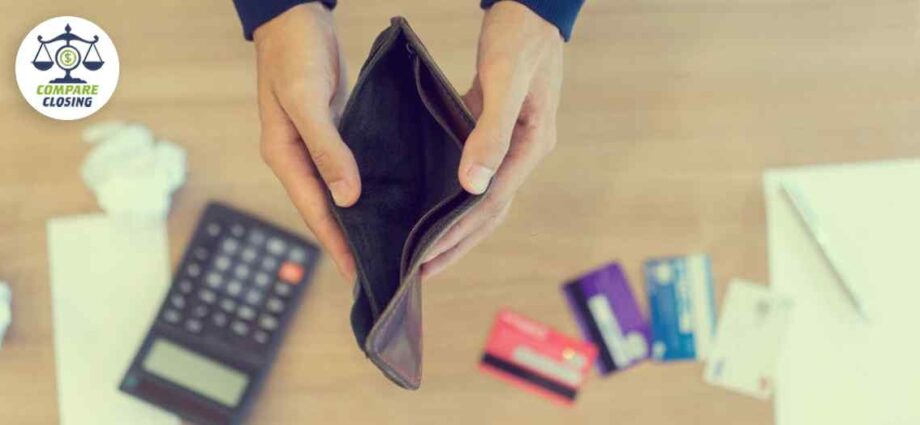Warning: Undefined variable $custom_content in /home4/comcompare/public_html/mortgagenews/wp-content/plugins/code-snippets/php/snippet-ops.php(582) : eval()'d code on line 7
Last updated on February 3rd, 2021 at 11:41 am
If you’re one of the millions of Americans who have declared bankruptcy financial recovery can seem difficult but don’t give up.
According to a study by the Consumer Financial Protection Bureau, People’s credit score increased rapidly after filing for bankruptcy.
Though a credit improvement is a good news, is it enough to offer a chance at homeownership? Here’s what you need to know about buying a house after bankruptcy.
The journey to buy a home may require a bit more effort, organization, and time than the average prospective homeowner.
You can still buy a home after bankruptcy. You’ll just need to wait until a judge discharges your bankruptcy before you can get a loan.
But beyond that, it largely depends on how quickly you can get your finances in order.
Bankruptcy isn’t something anyone wants, but for people in dire financial trouble, it can be the only way to wipe out liabilities and get a fresh start.
Bankruptcy can reduce financial stress, letting you focus on making positive financial decisions for your future.
- Reorganize Your Finances
Examine Your Debts and Credit Report
Take stock of where you are financially now that a few of your debts have been discharged.
Next, get a copy of your credit report. If you have a copy of your report prior to filing for bankruptcy, use it to create a before-and-after picture of your finances. Make it a regular practice to review your credit.
Put a Budget Together
Take control of your monthly household budget, paying every one of your bills on time, every time. Figure out your monthly income and expenses. Anticipate upcoming annual costs, and put money aside to fund when these costs are due.
Consider a Credit Card
You can also start building your credit by using a credit card to pay some of your monthly bills. Make sure you use the credit card like cash and pay it off every month. Pay all bills on time and monitor your credit report.
- Grow Your Savings
Figure Out How Much You Can Save
One of the positive side effects of bankruptcy is that you’ll have the breathing room to start putting away a little bit of money every paycheck.
And it doesn’t matter how small that amount is, of course, the more money you can save, the better. Use the “forced saving method.” Set a goal amount for your future home’s down payment.
- Make a Plan
Calculate What You Can Afford
In addition to saving up for a down payment, you should adjust your monthly spending to account for the overall cost of maintaining a home.
Conventional wisdom is that you shouldn’t spend more than 30% of your income on housing expenses, including the mortgage payment. Use an online calculator to find out exactly how much home you can afford.
Schedule an Inspection
When you’re shopping for a home, make sure you get a thorough appraisal and home inspection to help identify any potential problems that need to be fixed.
You don’t want to fall into credit card debt because of a surprise repair or replacement.
Consider Additional Costs and Factors
Be prepared for regular maintenance, such as landscaping, pest control, and snow removal. Also depending on your location, you may also need extra insurance for floods or earthquakes.
- Organize Your Financial Documentation
An easy way to get your financial documents organized is to split them into different categories.
- Bank, credit card, and loan statements
- Investments—such as savings bonds, retirement accounts, and stocks
- Tax records
- Insurance documents
- Legal documents—like your bankruptcy petition and marriage or divorce records
- Employment records—including pay stubs
- Medical bills—especially if you’ve had large medical expenses
- Shop Around for Mortgages
Determine Which Loan Type You Need
Conventional loans are offered by, private lenders like mortgage companies, credit unions, and commercial banks.
These loans tend to have more rigid criteria for approval but include more flexibility after the loan is secured. Government loans are also available.
Know Your Interest Rate Options
When it comes to the nature of financing, you can get either a fixed rate or an adjustable-rate mortgage.
Be prepared for Additional Fees and Expenses
Fee for appraisals, inspections, title processing, and escrow needs can pile up fast. These fees can either be added to your up-front expenses or rolled into your loan.
As you’re getting a mortgage after bankruptcy, make sure the terms and extra fees make sense for your future goals. Carefully use and build your new financial future.
Reference Source: Credit.com


